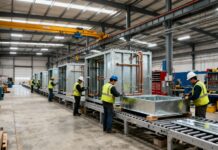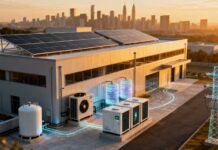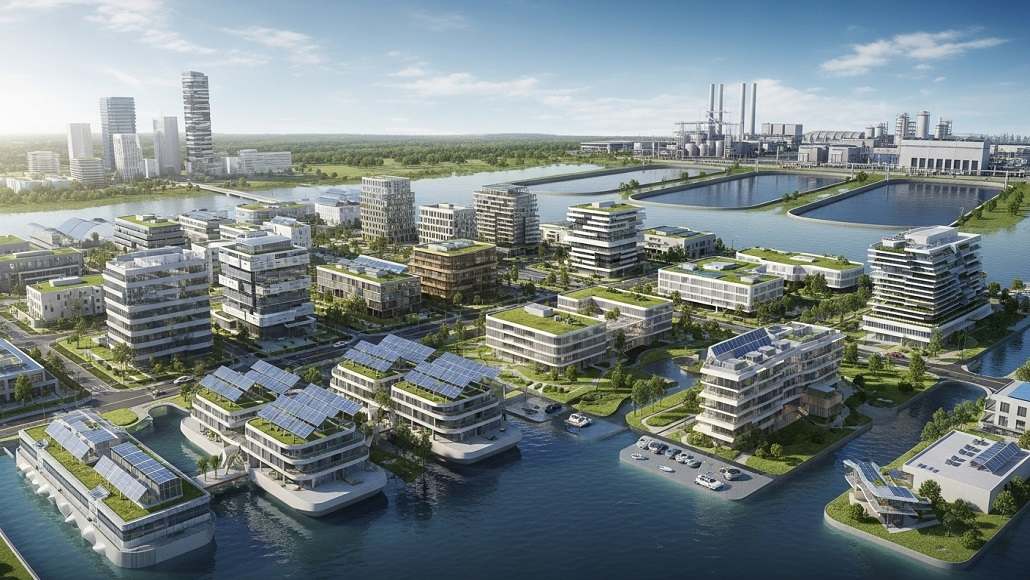In a world characterized by quick environmental change and rising challenges as a result of climate unpredictability, the field of adaptive architecture stands out as a critical frontier for sustainable development. Adaptive architecture is no longer an emergent, specialized pursuit; it is a mass imperative, supporting the very systems by which contemporary societies attempt to protect their infrastructure, economies, and communities from the escalating effects of climate change. As cities expand and industries stretch, the necessity for built environments that flow with shifting climatic patterns is propelling innovation throughout architectural practice, materials science, and energy systems.
The Imperative for Climate-Responsive Design
The impacts of climate change—increasing sea levels, more frequent storms, extended droughts, and intense heat—are already challenging the resilience of existing urban infrastructure. The United Nations reports that around 68% of the world’s population is likely to reside in cities by 2050, putting additional pressure on existing buildings and power grids. The price of climate disasters is going to be $145 billion in 2025, according to World Economic Forum estimates. Such alarming facts emphasize why adaptive architecture needs to be the hub of modern design conversations and policy drives.
Adaptive architecture combines concepts of flexibility, modularity, and sustainability that allow buildings to dynamically respond to stresses imposed by the environment. It incorporates passive techniques, such as orienting buildings to maximize solar gain and natural ventilation, and high-tech devices, like intelligent façades, real-time sensor networks, and responsive building envelopes.
Hydro-Energy Synergies: Run-of-River Meets Pumped-Storage
One of the most persuasive chapters in the history of adaptive architecture and climate resilience is being penned by energy deals that couple run-of-river hydroelectric power with pumped-storage facilities. This pioneering union of technologies is a powerful facilitator of decarbonization for heavy industry, an energy sector hitherto dependent on continuous, dispatchable baseload capacity.
Run-of-river hydro schemes, where a percentage of river flow is passed through turbines with no large-scale reservoir impoundments, offer clean, renewable power with little ecological interference. Their outputs can be subject to variation, however, by river flow rates and by seasons. In contrast, pumped-storage hydroelectricity is a great big, renewable battery: under conditions of surplus generation or slack demand, electricity is employed to pump water up to a reservoir; when demand is highest, this stored water is dumped back through turbines to produce power.
Assembling these techniques through strategic partnerships enables run-of-river plants to divert surplus generation into pumped-storage reservoirs, effectively leveling out the output and allowing for a consistent, dispatchable power supply. This integrated renewable solution holds special significance for heavy manufacturers—such as steel, cement, and chemicals—which need consistent, high-capacity energy around the clock. By leveraging the natural variability of river flows in tandem with the time-shifting flexibility of pumped-storage, adaptive architecture: designing for climate resilience is, quite literally, powering the green industrial transition.
A Case Study in Innovation and Partnership
One good example is found in Central Europe, where a public-private sector consortium has signed a long-term supply deal combining run-of-river hydro with state-of-the-art pumped-storage. Hybrid power plants, the IHA states, can provide capacity factors well over 80%, comparable to or better than fossil fuels in terms of reliability but with zero greenhouse gas emissions at the point of generation.
Strategic alliances between manufacturers and utilities are now more widespread. Such partnerships mean advanced forecasting, digital monitoring, and contractual assurances of power availability, all critical for adaptive architecture: industrial-scale design for climate resilience. Heavy industry derives the benefits not just of decarbonized energy but also of price stability, while grid operators receive useful balancing services and enhanced penetration of renewables.
Integration with the Built Environment
The applications of adaptive architecture reach far beyond energy procurement. Climate-resilient buildings are integrating on-site renewable generation—rooftop solar and micro-wind—into demand response systems and thermal energy storage. Smart grids allow buildings to share information with utilities, shedding non-essential loads or drawing on stored energy when demands peak, in effect becoming active members of an adaptive, resilient power system.
Architects and engineers are also redesigning materials and methods of construction. Biophilic design, green roofs, and modular construction advance the ability to retrofit fast and adapt to climate. Adaptive architecture: designing for climate resilience in flood-risk places can incorporate amphibious foundations, permeable landscape, and raised service cores. In cities overheated, passive cooling, reflective, and integrated shading devices are becoming best practice.
Policy, Finance, and the Path Forward
Governments and financial institutions have recognized the centrality of adaptive architecture in climate resilience strategies. The European Union’s Green Deal and the United States’ Inflation Reduction Act both allocate substantial resources for resilient infrastructure and clean energy integration. According to the Climate Policy Initiative, global investment in climate-resilient infrastructure surpassed $150 billion in 2022, a figure projected to double by 2030.
But scaling adaptive architecture: climate-resilient design will need more intense collaboration across disciplines to new performance and sustainability standards, and systems thinking by systems—from city planning to corporate boardrooms. Architectural, engineering, and urban planning education and training are changing, with a greater focus on interdisciplinary training and climate literacy.
Conclusion: Building for an Uncertain Future
As climatic uncertainty is set to become the hallmark of the 21st century, adaptive architecture: designing for climate resilience is no longer a choice—it is a necessity. The synthesis of creative hydropower deals, advanced materials, intelligent technology, and visionary policy frameworks is the epitome of the built environment’s potential to not only survive but succeed in the face of adversity. For heavy industry, the consistent availability of renewable, dispatchable energy in the form of run-of-river and pumped-storage partnerships presents a concrete route to decarbonization, economic reliability, and long-term competitiveness.
The architecture of the future is one that is adaptive, and the plan for climate resilience is being sketched out today. Investing in adaptive planning, embracing technological change, and promoting cross-sector collaboration can guarantee that the cities and industries of societies are not merely surviving, but thriving under climate change.































